
BET Test Centre
Where raw forces are used sensibly.
BET Test Centre: tested quality
OBO products stand for the highest quality. To guarantee this, in addition to comprehensive external tests, we also rely on our in-house BET Test Centre. Here, the quality, resilience and load capacity of the OBO products are subjected to comprehensive testing. Amongst other things, our highly qualified specialists test lightning protection components, lightning protection structures and surge protection systems. In addition, the impacts of events involving lightning are investigated scientifically.
A further core testing area is the resilience and load capacity of cable support systems. The state-of-the-art testing systems in the OBO Test Centre allow simulations of tonnage loads. Here, the OBO testing engineers perform tests not only to accompany product development, but also as part of certifications, as required or on special customer request.
The BET Test Centre also puts the load capacity of underfloor systems to the test.
OBO performs the following tests at the BET Test Centre:
- Electromagnetic properties of cable management systems: tests according to DIN/CLC/TS 50659
- Underfloor systems: tests according to DIN/EN 50085-2-2
- Cable support systems: tests according to DIN/ EN/IEC 61537
- Surge protection devices: tests according to DIN/EN/IEC 61643
- Lightning protection components: tests according to DIN/EN/IEC 62561
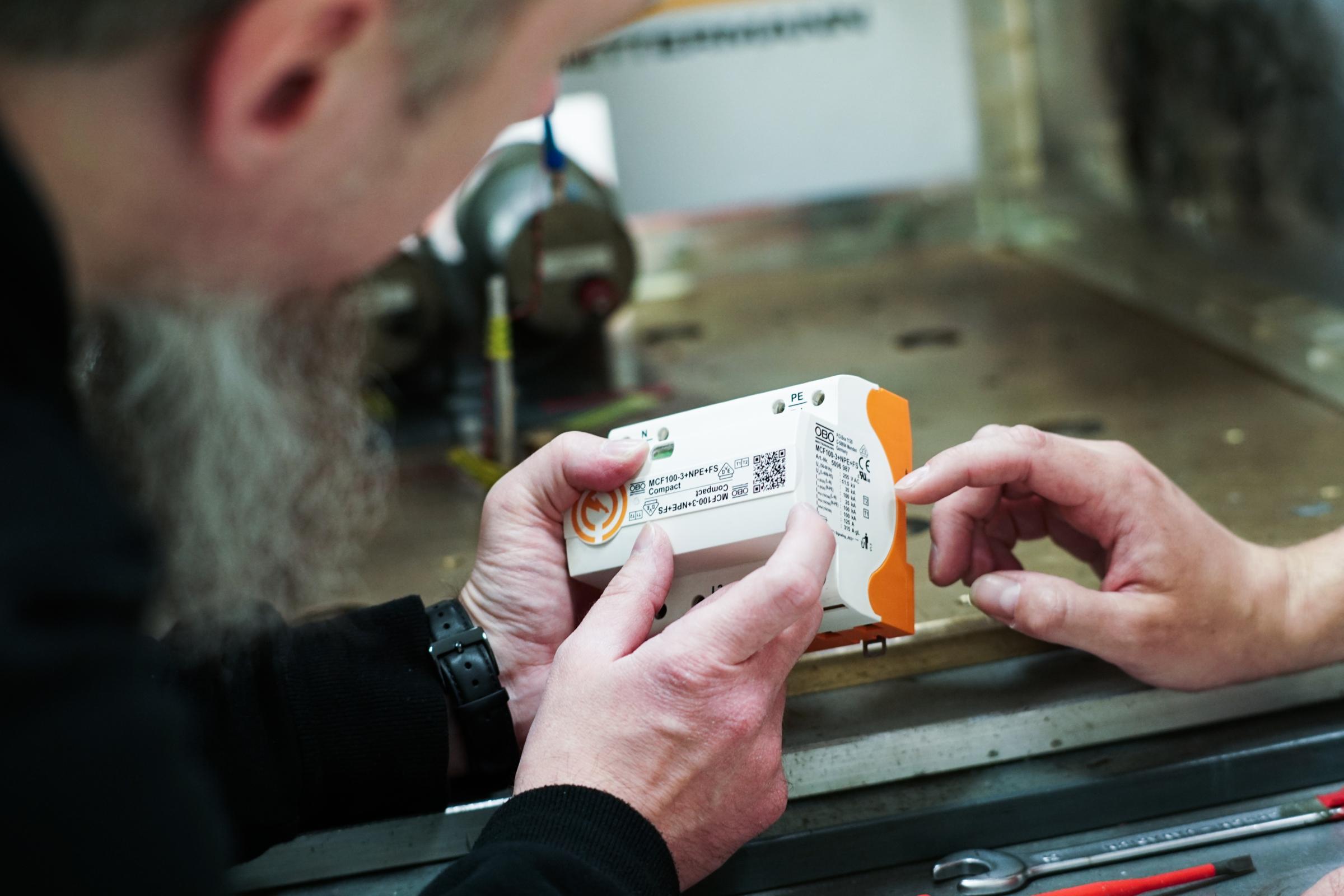
Electromagnetic properties of cable management systems
Tests according to DIN/CLC/TS 50659
Electrically conductive, metal cable routing systems included in the equipotential bonding shield the cables routed through them against electromagnetic interference.
The efficiency of shielding against magnetic fields is defined by the shield impact of cable management systems and measured according to chapter 4 of DIN/CLC/TS 50659. The interference current induced in a conductor loop by the magnetic field of an impulse current is measured in a defined set-up. The magnetic shield impact of a cable management system is 20 times the value of the logarithm ratio between the interference current in the conductor loop without cable management system and the interference current in the conductor loop when the loop is within the cable management system.
The transfer impedance is another characteristic of electrically conductive, metal cable management systems that helps to assess electromagnetic interference.
It is calculated based on the ratio of the line voltage drop along a specified set-up and an interference current that flows through this set-up. The line voltage drop that occurs is a combination of the line voltage drop due to the interference current in the cable management system along the set-up and the line voltage drop that is induced by this interference current in a cable laid in the cable management system. The transfer impedance measurement is performed according to chapter 5 of DIN/CLC/TS 50659.
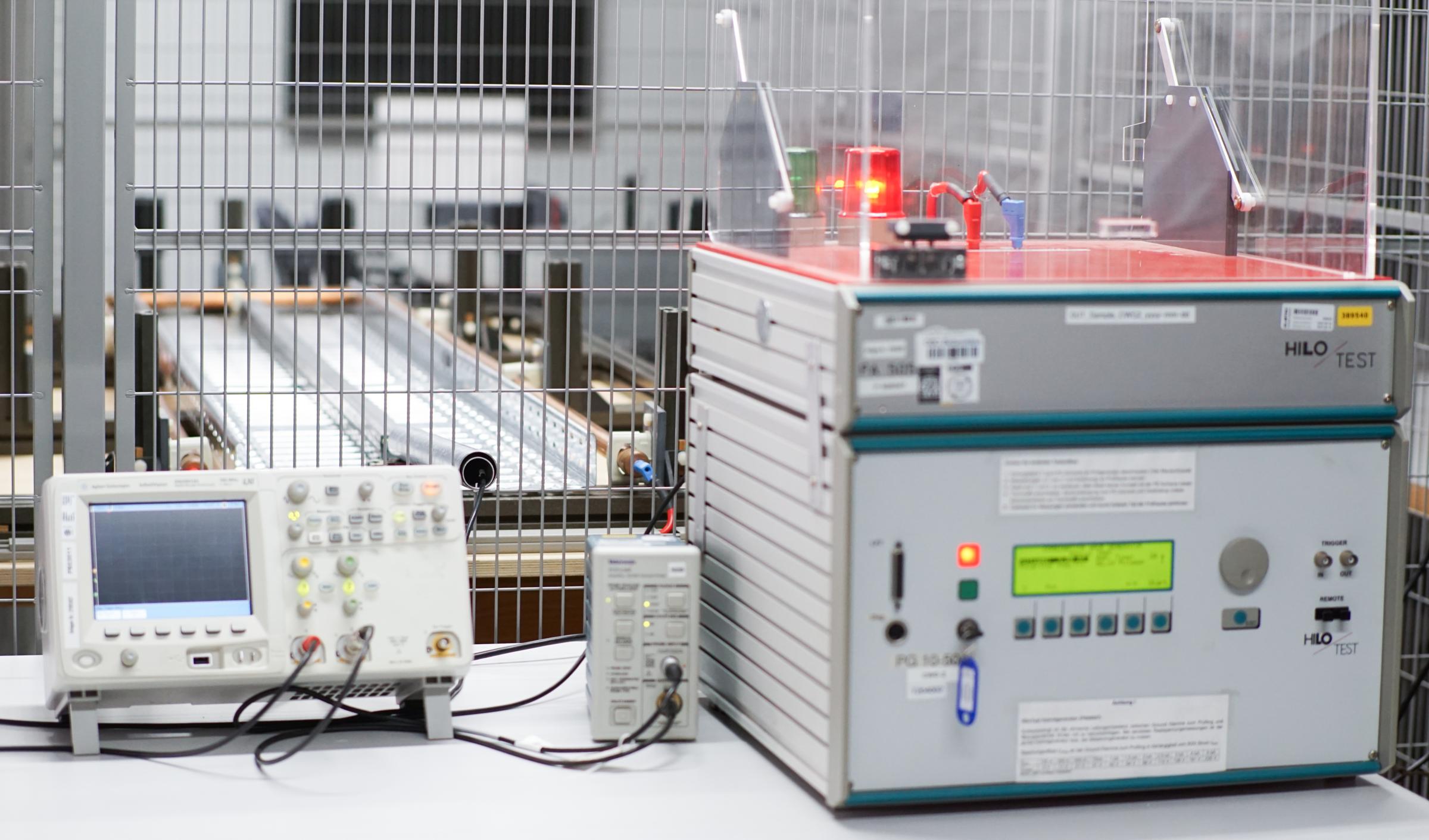
Underfloor systems
Tests according to DIN/EN 50085-2-2
In some cases, underfloor systems have to withstand large loads and therefore should provide adequate load capacity, durability and safety. At the BET Test Centre they are subjected to mechanical loads in accordance with DIN/EN 50085-2-2. The European standard defines requirements and tests for electrical installation duct systems.
Different shapes and areas are used during testing depending on the product and the corresponding subsection of the standard. The test system records the actual compressive force and the corresponding deformation of the system and its components. The test system has an internal test range of 0.7 m x 0.7 m and can generate a compressive force of up to 50 kN.
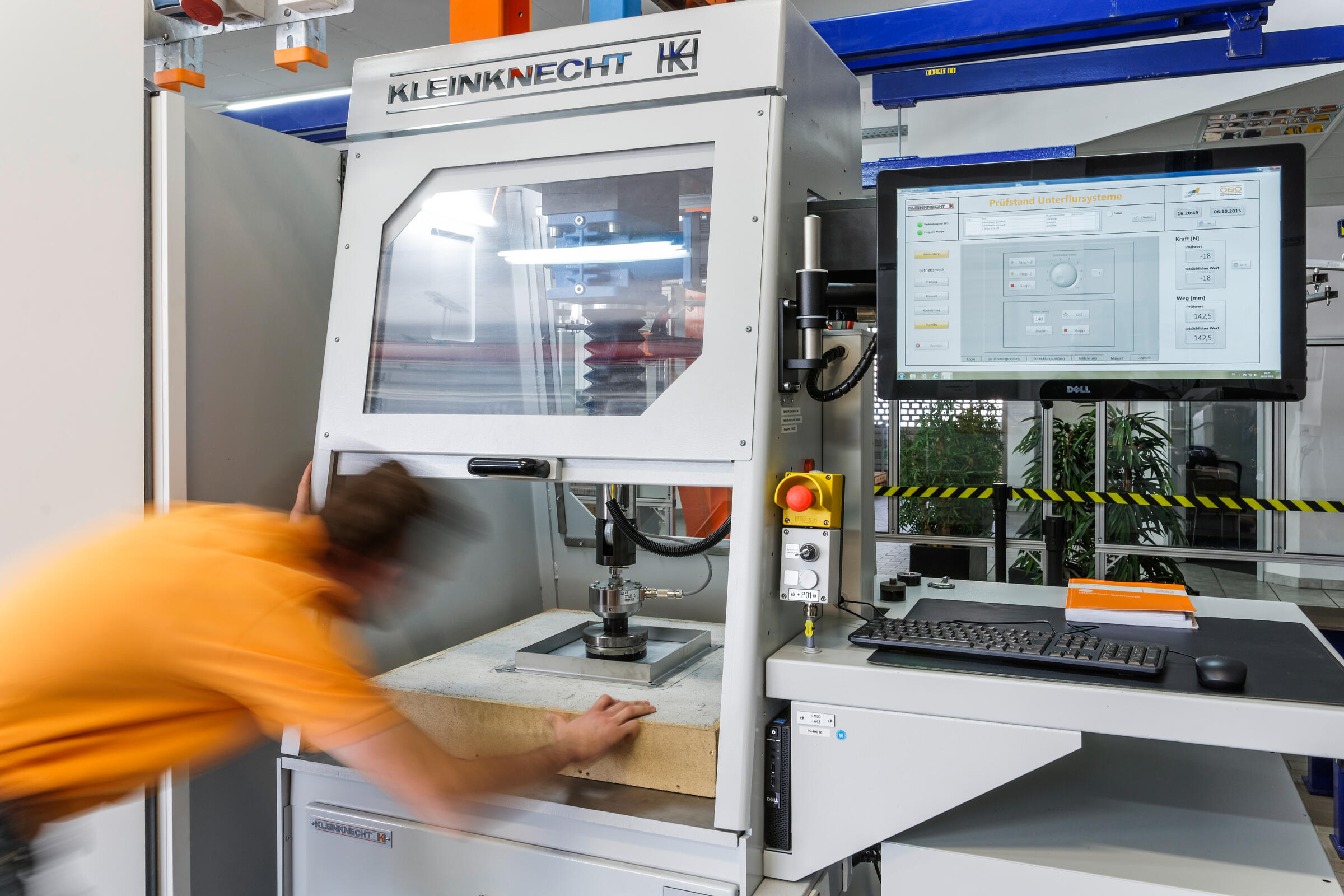
Cable support systems
Tests according to DIN/EN/IEC 61537
To guarantee the load-bearing capacity of cable support systems (KTS), DIN/EN/IEC 61537 prescribes tests for safe working loads (SWL) and defines the corresponding testing conditions. The BET Test Centre has its own cable support system testing equipment to perform these tests. It is an in-house construction by OBO Bettermann and has, over the years, been continuously expanded and adapted to new requirements and circumstances.
Cable support systems are mounted according to DIN/EN/IEC 61537. Depending on the length of the test field, a total of 7 t of tensile force and the load to be supported are applied to the items being tested using two hydraulic cylinders. The deformations which occur are detected by displacement sensors and documented together with the actual force in kN/m. If the cable support system has successfully withstood the load, the load is increased by a factor of 1.7 as protection against failure. The deformation relative to the load continues to be recorded.
The KTS testing system permits tests with loads of 0.05 kN/m to 4.9 kN/m. The following tests can be performed in accordance with DIN/EN/IEC 61537: horizontal and vertical level, horizontal direction according to chapter 10.3, 10.4 and 10.5 with support spacings
- Up to 7 m as two-field support structure
- Up to 15 m as single-field support structure

Cable tray or cable ladder systems as well as individual elements that support these systems (e.g. brackets and suspension devices) are subjected to a safe working load according to DIN/EN/IEC 61537. During the test, the KTS test system records the actual force and the corresponding deformation. The test system is designed for a tensile force of 25 kN.
The mechanical strength of cable support systems and cable ladder systems is tested via an impact test with a pendulum impact hammer. The pendulum impact tester at the BET Test Centre can test up to 50 J. According to DIN/EN/IEC 61537, this kind of test is not required for metal systems.
Another test that can be performed at the BET Test Centre is the test of electrical conductivity on cable support systems and cable ladder systems according to chapter 11 of DIN/EN/IEC 61537. It ensures equipotential bonding and earthing.
System components for which no corrosion class is specified in the test standard DIN/EN/IEC 61537 can be tested using a salt spray test in a salt spray test chamber. The neutral salt spray test (NSS) according to ISO 9227 enables assessment of corrosion resistance when corrosion protection has not been classified. Often, this test is also used for comparative testing of similar corrosion protection types.
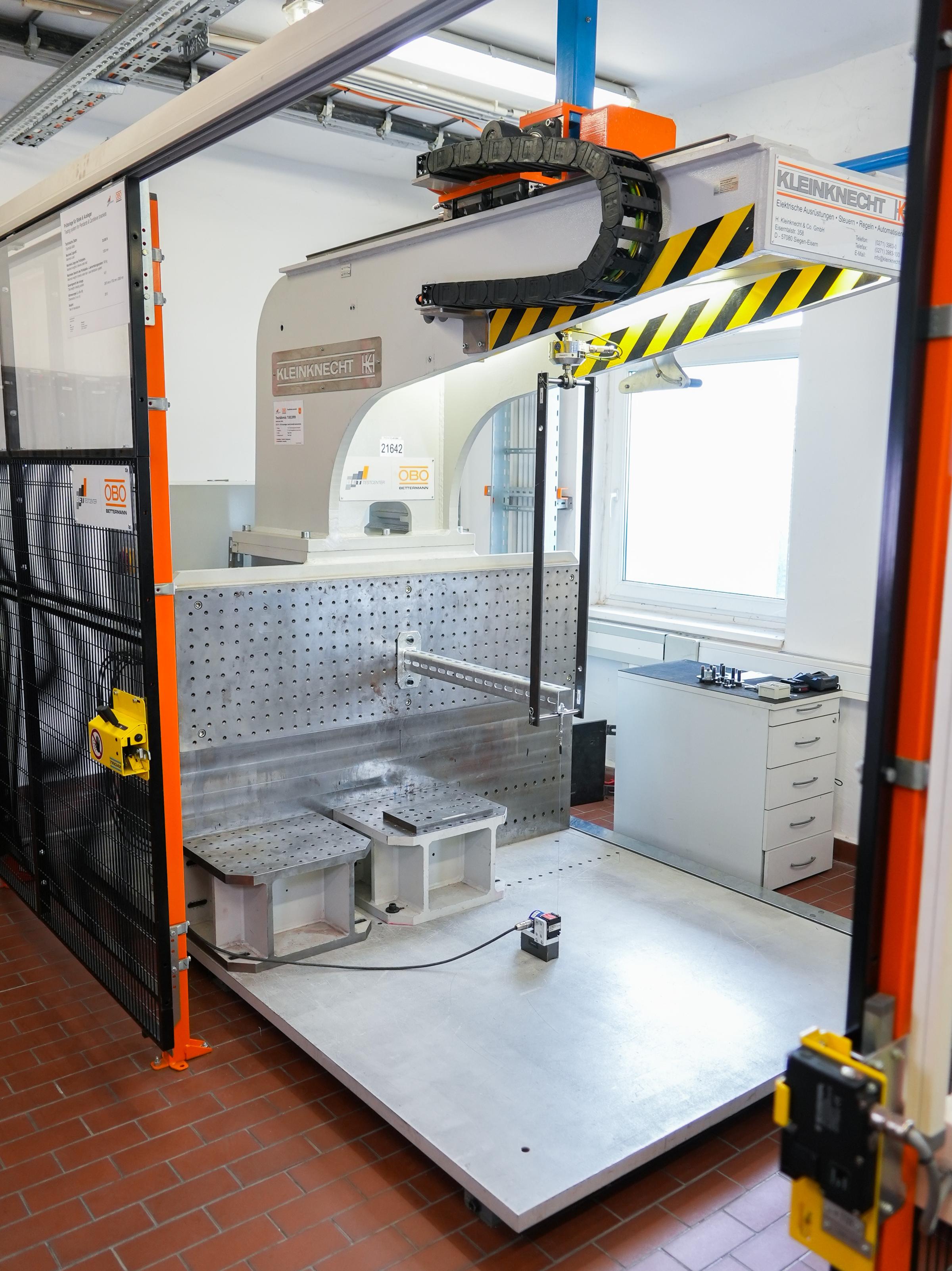
Surge protective devices
Tests according to DIN/EN/IEC 61643
The series of standards DIN/EN/IEC 61643 requires different performance and safety tests to prove the discharge capacity and proper performance of surge protective devices (SPD). These tests also ensure the reliability of SPDs in the event of system failures.
With the lightning current generator at the BET Test Centre, it is possible to test the performance and discharge capacity of type 1 and 2 SPDs. This generator delivers 8/20 and 10/350 current pulses up to 200 kA. The lightning current generator features a resistive-capacitive differential voltage divider system that measures up to 10 kV.
For the performance test, an AC source is also available, which is connected in parallel to the lightning current generator and can deliver prospective short-circuit currents of up to 3.5 kA at 190 V and 255 V and 1.5 kA at 440 V.
Our hybrid generators are capable of delivering up to 24 kV (1.2/50)/12 kA (8/20). The addition of a 498 Ω resistor enables trigger impulse voltage measurements for switching and combined SPDs in accordance with CTL decision sheet DSH 2006.
Total impulse discharge current measurements can be performed on SPDs with up to 4 live wire connections. With the available measuring system, the current running through each live wire can be measured up to 60 kA for 8/20 and 10/350 current pulses.
Limiting voltages and leakage currents can also be tested at the BET Test Centre.
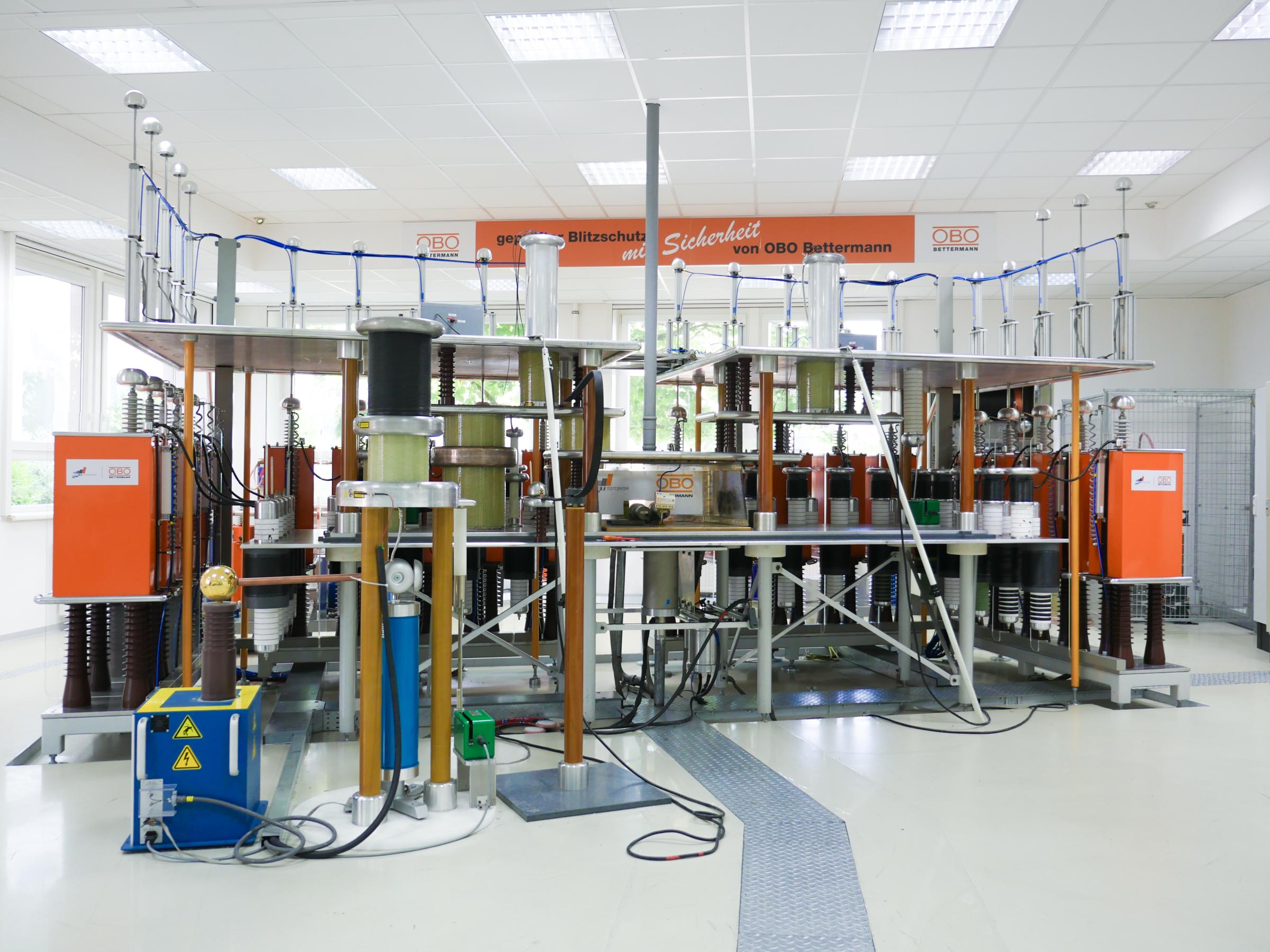
Lightning protection components
Tests according to DIN/EN/IEC 62561
The series of standards DIN/EN/IEC 62561 sets out various tests such as lightning impulse currents and electrical, mechanical and environmental tests. These tests verify that the components of a lightning protection system have a sufficient lightning impulse current carrying capability and a resistance to environmental conditions capability.
The following tests are possible using the testing equipment at the BET Test Centre:
The conditioning tests (ageing test) stipulated in the DIN/EN/IEC 62561 series can be performed in the salt spray chamber and the Kesternich chamber. The cyclic salt spray test (severity level 2) described in IEC 60068-2-52 can be performed with the salt spray chamber. Exposure to a moist atmosphere containing sulphur in accordance with ISO 6988 is performed in the Kesternich chamber.
With the lightning current generator, lightning current tests according to the DIN/EN/IEC 62561 series can be performed with up to 200 kA and a wave shape of 10/350 and 8/20. Lightning system components, such as connection components, wire materials, spark gaps, surge counters and components for isolated lightning protection systems can be tested.
Additional electrical testing, such as testing of the contact resistance or the specific electrical resistance of wire materials, as well as insulation resistance measurements, are possible using different measurement methods.
Trigger impulse voltages of up to 24 kV (1.2/50) and surge current pulses of up to 12 kA (8/20) can be tested with the hybrid generator.
The high-voltage test devices also enable voltage rises of 100 V/s up to 5 kV AC and up to 6 kV DC.
In addition, various mechanical tests, such as impact tests with a pendulum impact hammer, can be performed.
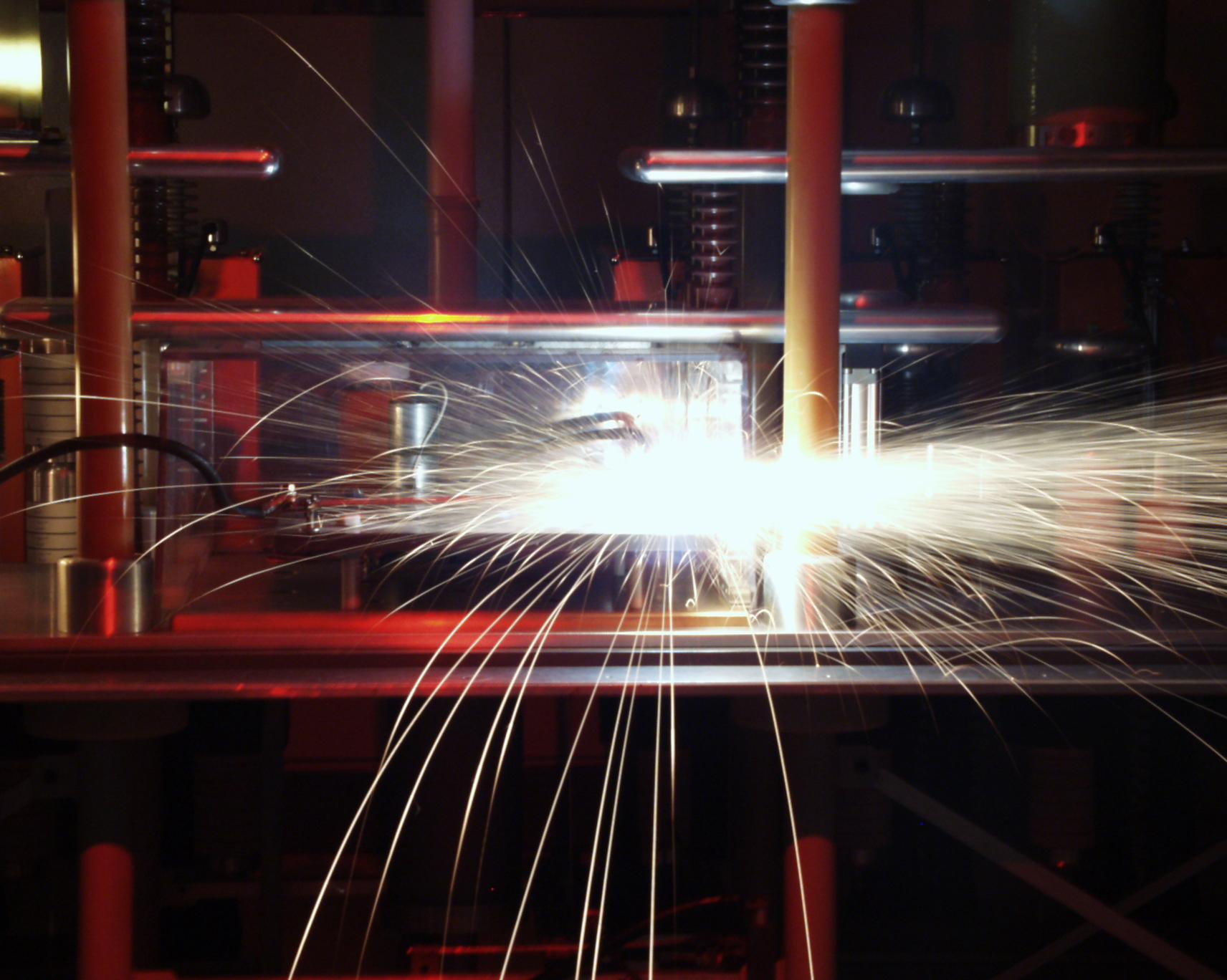
Certificates
The following decision rule describes how measurement uncertainty is taken into consideration in declarations of conformity with a specific requirement: Declarations of conformity are decided in accordance with IEC Guide 115 provided nothing else has been specified in the applied test standard.